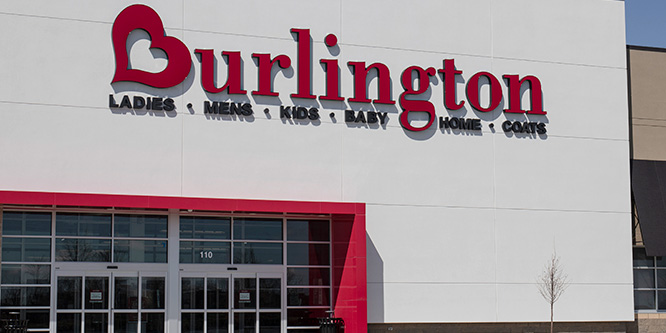
Photo: Getty Images/jetcityimage
Burlington Stores has doubled its long-term goal for potential stores to 2,000 from 1,000 due to increasing confidence in a small store prototype, at 25,000 square feet.
The off-pricer’s average store was 47,000 square feet in 2019 with some locations at 80,000. Burlington ended the year with 761. The 1,000 target had been in place since its 2013 initial public offering.
On its fourth-quarter earnings call, Michael O’Sullivan, CEO, said the smaller format will become a “central element” in new stores.
A key enabler of the format is the work Burlington has done to operate with leaner in-store inventory levels that’s been a “core element” of its Burlington 2.0 improvement plan. Burlington 2.0 also calls for heightened focus on trend-right products and opportunistic buys.
“When you have less in-store inventory, you need less physical space,” said Mr. O’Sullivan. “This has significant economic benefits, translating to lower occupancy costs and higher operating margins.”
The smaller prototype also increases the pool of potential real estate sites for new stores and relocations.
Finally, the expansion ramp-up takes into account opportunities presented by the accelerating retail disruption and widespread store closures.
“We looked very closely at how retail market share might evolve over the next several years,” said Mr. O’Sullivan. “What will happen to the share of department stores, specialty stores and mall-based retailers. Of course, we also looked at how successful e-commerce is likely to be in penetrating the categories that we compete in at the price points we offer and with the customer segments that we serve.”
He concluded, “The bottom-line from all of this analysis is that we feel very confident about the market share opportunity that we have ahead of us.”
Burlington revealed its 2,000-store target as it reported better-than-expected fourth-quarter results with flat same-store growth despite not having e-commerce.
Shares of Burlington, TJX and Ross Stores have seen strong run-ups over the last year as the off-price channel is expected to benefit from apparel’s challenges. As noted in The Wall Street Journal, risks include off-pricers’ minimal online exposure and major apparel brands restricting off-price sales for margin reasons.
- Burlington Stores, Inc. Reports Fourth Quarter 2020 Results – Burlington Stores
- Burlington Stores, Inc. (BURL) CEO Michael O’Sullivan on Q4 2020 Results – Earnings Call Transcript – Burlington Stores/Seeking Alpha
- Will off-pricers be major share gainers post-coronavirus? – RetailWire
- Can off-pricers overcome second-quarter turbulence? – RetailWire
- Off-Price Retail Is Fully Priced – The Wall Street Journal


Leave a Reply
You must be logged in to post a comment.